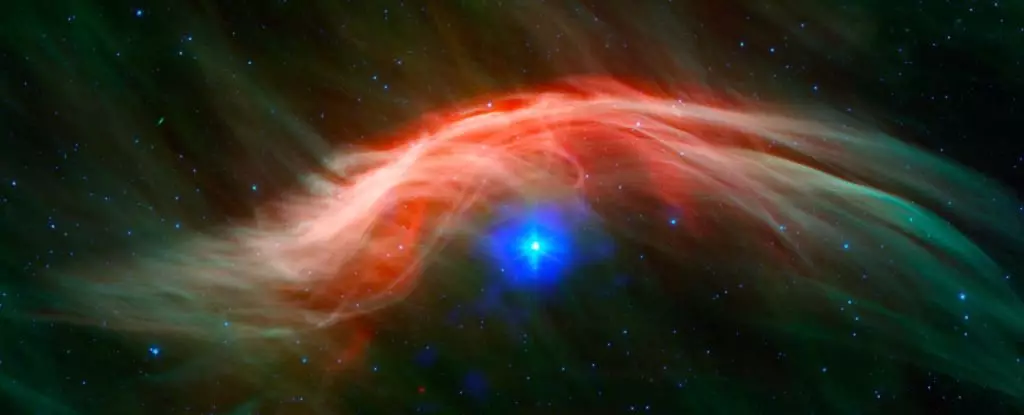Is there a hidden relationship between massive cosmic events and the intricate dance of life on Earth? Recent research has prompted intriguing speculation about the impact of a supernova explosion on microbial evolution in places as remote as Lake Tanganyika in Africa. This question, echoing the words of astronomer Carl Sagan that we are all made of stardust, invites a deeper exploration into the cascade of events that connect the cosmos and terrestrial biology.
Caitlyn Nojiri, an astrophysicist from the University of California Santa Cruz, led a team that investigated the possibility that cosmic radiation resulting from a supernova explosion 2.5 million years ago may have triggered a surge in viral diversity in Lake Tanganyika. This striking link between cosmic phenomena and mutations in organisms prompts us to rethink the ways in which extraterrestrial events can influence the evolutionary pathway of life on our planet.
Radiation, particularly cosmic rays, has been recognized as a significant contributor to evolution on Earth for some time. Cosmic rays are high-energy particles that can lead to mutations within biological organisms; these mutations can be neutral, beneficial, or detrimental. As Nojiri points out, while evolution would proceed inexorably on Earth, cosmic radiation may incrementally sway the direction of evolutionary changes.
The local environment of our solar system, known as the Local Bubble, is mostly empty except for the remnants of past supernovae. The significance of this bubble is that explosive stellar events millions of years ago may have shaped the radiation levels experienced by Earth, making it a focal point for potential impacts on the genesis and development of life.
Nojiri’s research team utilized deep-sea sediment core samples to track the isotopes of iron within the Earth’s geological record. They concentrated on iron-60, a radioactive isotope created during supernova explosions. This isotope, known for its precise half-life, serves as an effective marker for pinpointing historical events connected to cosmic explosions.
Previous studies revealed two distinct spikes of iron-60 found in the sediments: one dating back to 6.5-8.7 million years ago and another occurring between 1.5 to 3.2 million years ago. The latter spike coincided with the timeframe of the viral explosion in Lake Tanganyika, making this a tantalizing opportunity for researchers to explore potential correlations between cosmic activity and biological diversity.
The team diligently worked to reconstruct the dynamics of celestial objects and their movements, eventually leading to conclusions suggesting that Earth’s penetration into the Local Bubble likely introduced iron-60 into our atmosphere, contributing to higher radiation levels.
Identifying Supernova Candidates
The rising question then becomes: which supernova was responsible for the iron spikes? Nojiri and her colleagues scrutinized the Scorpius-Centaurus and Tucana-Horologium star groups, hypothesizing that one of these supernovae would have triggered the observed spikes in iron-60. The Scorpius-Centaurus region, particularly interesting due to its association with runaway stars and pulsars, emerged as the most likely suspect for influencing Earth’s radiation levels during that time.
Through computer simulations, the research team forecasted the effects of cosmic radiation on Earth’s biological systems, discovering that our planet was likely subjected to elevated radiation for a considerable 100,000-year period post-explosion. Such levels of radiation could lead to significant mutations in organisms, establishing a possible link between these cosmic events and changes on Earth.
While the study does not absolutely establish a direct connection between observed viral diversification and cosmic radiation, Nojiri suggests notable parallels, presenting an opportunity to contemplate broader evolutionary dynamics. For example, a previous study indicated that radiation thresholds capable of causing DNA damage began at around 5 milligrays annually, which raises questions about how increased radiation exposure could drive mutations.
The evidence suggests that while evolution is a result of myriad factors—including environmental changes and biological interactions—the cosmos could wield its influence in ways we’re only beginning to understand. The juxtaposition of cosmic phenomena and terrestrial biology underscores a profound interconnectedness, where events billions of miles away might resonate in varied ecosystems on Earth.
Ultimately, the exploration of how supernovae potentially impact Earth’s evolutionary trajectory may reshape our understanding of life itself. The intricate interplay between cosmos and biology highlights a fundamental truth: all things are interwoven in a vast, complex network. In contemplating these celestial influences, we are reminded of our broader existence within an expansive universe, where even distant stellar explosions could play a silent role in shaping the flourishing tapestry of life on Earth. As we probe the depths of these investigations, we uncover more than just scientific connections; we resonate with the cosmic wonder that binds us all.


Leave a Reply